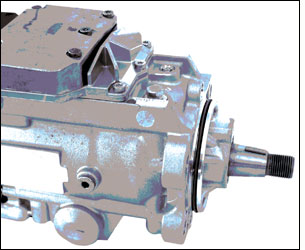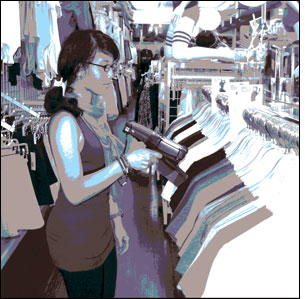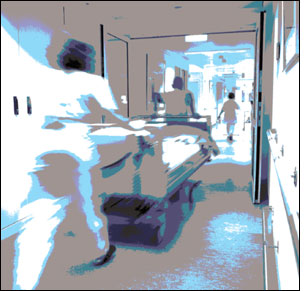When 2009 began, some technology writers questioned whether, in the face of a global recession, companies could afford to deploy radio frequency identification. Some even questioned whether the technology was still relevant. Ironically, in a year when almost all the business news was bleak, 2009 might just be remembered as the year RFID proved its value. Here are some of the applications end users deployed successfully last year.
Manufacturing
Manufacturers around the world showed that RFID could be used successfully to track parts and raw materials, work in process and finished goods inventory. Marigold Industrial deployed a passive ultrahigh-frequency system at its manufacturing facility in Poiares, Portugal, to get better visibility of the materials used to make its protective gloves. The system, which replaced a paper-based tracking process, increased the accuracy of inventory and shipment records within the facility. Once fully optimized, Marigold says it should also decrease the amount of time required to complete inventory counts.
Bosch, the world’s largest supplier of automotive parts, is using RFID-tagged kanban cards to trigger the replenishment of components for the diesel fuel injectors it manufactures at two locations in Germany. The cards contain passive high-frequency RFID tags at one site, and passive UHF RFID tags at another. Before RFID was implemented, it sometimes took up to two hours for parts replenishment orders to be placed. Both systems, which have been functioning without problems, have sped up the parts replenishment process and reduced errors. Because the RFID deployments promise to deliver a fast return on investment, Bosch plans to roll out the system at eight additional sites worldwide that build the same injectors.
ABB, a global manufacturer of power and automation equipment for utility and industrial companies, deployed an RFID system at its factory in Helsinki, Finland, to better track outbound shipments of approximately 200,000 drives per year. The system has reduced shipping errors, which affect its invoicing process and, therefore, revenue. And Caterpillar is employing a real-time locating system (RTLS) at its heavy-equipment manufacturing plant in Belgium to ensure its hydraulic valves and hoses are assembled properly. RFID ensures the appropriate wrench is used on each hydraulic valve.
Retail
RFID proved in 2009 that it could deliver big benefits for retailers, particularly those selling apparel, footwear and accessories. Delivering the keynote address at RFID Journal‘s RFID in Fashion event in August, Zander Livingston, American Apparel‘s director of RFID, said the technology had enabled his company to improve inventory accuracy to about 99 percent, which led to a 14 percent increase in sales at RFID-enabled stores.
Charles Vögele Group won the 2009 RFID Journal Award for best implementation for its system of tracking individual apparel items from point of manufacture to point of sale. Speaking at RFID Journal LIVE!, Thomas Beckmann, the company’s head of supply chain, said RFID enabled Charles Vögele to illuminate what it calls the “black holes” in its supply chain, while also reducing stock-outs and time spent counting inventory by 50 percent.Serge Blanco, a maker of high-end clothing, employs EPC Gen 2 RFID tags to receive incoming goods at its distribution center in Toulouse, France. Before deployment of the system, employees had to open individual boxes and read the bar code on each item. This required 10 workers to receive 20,000 garments. Now, the company needs just two people to receive 35,000 items into inventory, and it’s been able to move many employees into customer service and quality-control jobs.
Indian jewelry retailer Bhima & Brothers Jewellers deployed RFID to track high-value inventory and provide customers with immediate information regarding its jewelry. The system reduced the time required to take inventory from 36 person-hours to one person-hour, and decreased the time to complete a sales transaction from between six and eight minutes to less than one minute.
Health Care
Perhaps nowhere has RFID’s impact been larger than in the health-care sector. Hospitals and clinics worldwide have found that RFID can instantly locate critical medical equipment. Bon Secours Richmond Health System, in Richmond, Va., is saving $2 million each year by using RFID to decrease the incidence of lost or stolen equipment, thereby drastically reducing the amount of rental equipment needed at its four hospitals. The system has also slashed the average search time for missing equipment throughout the hospital, including in operating rooms.
WellSpan Health deployed a Wi-Fi-based RTLS to better manage assets at its 580-bed York Hospital in York, Pa. The emergency department wanted quick access to equipment for treating critically ill or injured patients. Since August, the hospital has tagged 1,100 items, and reports that the system has helped it track some expensive items that might otherwise have had to be replaced. But the greatest benefit thus far is that hospital workers don’t have to spend time trying to locate items and, instead, can focus on patients’ needs, improving safety and satisfaction.
Companies and organizations in other industries also reported benefits from RFID last year. The technology enabled A.S. Shipping Agencies, a container freight station operator based in Chennai, India, to reduce time spent searching for containers from 24 hours to just a few minutes. And the Office of the State Attorney for the 15th Judicial Circuit in West Palm Beach, Fla., is saving approximately $100,000 annually using an RFID system to track its felony case files within its four-story facility.
No doubt, 2010 will bring more success stories.
Photos: American Apparel, iStockphoto




